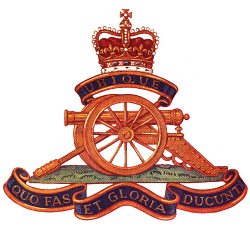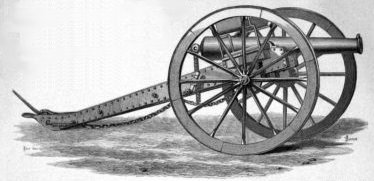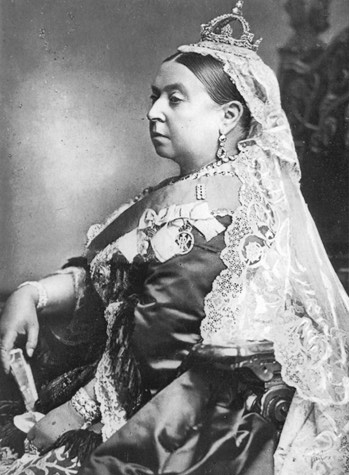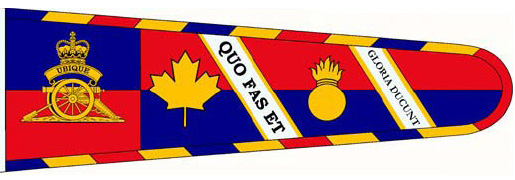Topic: Canadian Army

Royal Canadian Artillery Observes Centennial With Big Show on Hill
Ottawa Citizen; 26 May 1955
By Dave McIntosh, Canadian Press Staff Writer
 When his 21st Army Group stood victorious in Germany in 1945, Field Marshal Montgomery sent this message to the artillery:
When his 21st Army Group stood victorious in Germany in 1945, Field Marshal Montgomery sent this message to the artillery:
"I think all the other arms have done very well, too. But the artillery has been terrific …"
Canada's gunners will probably hark back to this message today when the Royal Canadian Artillery celebrates its centennial. It is the oldest military formation in Canada.
The ceremonies began at 12.30 p.m. when Maj.-Gen. H.O.N. Brownfield of Brockville, Ont., Honorary Colonel Commandant of the Royal Regiment of Canadian Artillery, inspected a guard of honour drawn up on the lawn in front of the Peace Tower on Parliament Hill.
 On display was a collection of artillery weapons ranging from a muzzle-loading, nine-pounder cannon use in the War of 1812-15 to the Nike, the new ground-to-air guided missile.
On display was a collection of artillery weapons ranging from a muzzle-loading, nine-pounder cannon use in the War of 1812-15 to the Nike, the new ground-to-air guided missile.
Special Parties
Canadian gunners everywhere held special parties and parades. There now are 5,000 regular soldiers serving in 12 artillery units. The 2nd Regiment, Royal Canadian Horse Artillery, is part of the 1st Canadian Infantry Brigade in Germany.
"Artillery Day" actually marks the centennial of five units—the 2nd Field Battery of Ottawa, 7th Field Battery of Montreal, 11th Field Battery of Hamilton, 32nd Field Battery of Brockville and 57th Locating Battery of Quebec City.
Cannon fire echoed across forest clearings in Canada as long ago as 1636 when French settlers in Quebec prepared themselves for defence against the Indians.
A history of the Canadian artillery remarks that "the small cannon, if they did little to reduce the Indian population, at least impressed it."
Militia units manned some 23 guns in the defence of Quebec against Sir William Phips' attack in 1690. Volunteer gunners were in action at Pres de Ville, Que., in the Revolutionary War of 1775-76 and Canadian gunners saw action in the War of 1812-15.
Militia Act
In 1855, the Militia Act was passed by Canada's united Parliament (Quebec and Ontario only). Part of the 5,000-man authorized force included seven batteries of field artillery.
Maj.-Gen. T.B. Strange who commanded "B" Battery at Quebec City from 1871 to 1887 and later became dominion inspector of artillery, is known as the "father of Canadian artillery."
Gen. Strange used to turn out his gunners for sudden exercises at night, to the wrath of the sleeping citizens of Quebec.
 Two regular batteries and many militia artillery units took part in the 1885 northwest campaign.
Two regular batteries and many militia artillery units took part in the 1885 northwest campaign.
In 1893, the Canadian artillery received the designation "Royal" from Queen Victoria. Six years layer, three batteries were despatched to South Africa to fight in the Boer War.
Served Overseas
Some 38,000 of the 44,000 gunners who enlisted in the First World War served overseas. A total of 2,031 gunners were killed and another 7,953 wounded. Two batteries served in north Russia and one in Siberia.
The artillery took part in all the big battles in which Canadians were involved—Ypres, the Somme, Passchendaele, Amiens, Arras, Cambrai, Mons and Vimy Ridge.
In 1926, the RCA's motto was adopted officially. It is "Ubique, quo fas et gloria ducunt" ("everywhere, wither right and glory lead").
The sad day arrived in 1929 when the regiment—gunners refer to the RCA simply as "the regiment"—was informed it was to become mechanized but it was not until 1937 that it parted with its last horse, the same year that the first peacetime anti-aircraft batteries were formed.

Casualties High
In the Second World War, the gunners suffered 5,592 casualties, 1,223 of them fatal.
The 1st RCHA was in France for a few days in 1940 and elements of the 2nd divisional artillery landed at Dieppe in 1942. Guns of the 1st Division supported infantry and tanks in Sicily in 1943.
Gunners of the 3rd Division fired their 105-millimeter howitzers from landing craft before they set foot in France June 6, 1944. they were joined later by the 4th Division and 2nd Canadian Corps Artillery.
Canadian gunners have also served in Korea. The 2nd Regiment, RCHA, was the first on the scene, followed by the 1st, 4th, and 3rd Regiments, in that order.
In 1952, King George VI became the first Captain General of the Royal Canadian Artillery, a distinction accorded no other corps in the Canadian Army.
